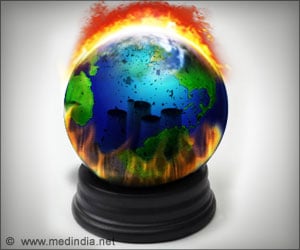Global temperature or global warming increase engenders locally unstable weather on Earth. Climate change in recent years has given us extreme heat records.

Global and Local Warming
Climate change in recent years has given us extreme heat records, such as last year, when Canadians measured their highest temperature at almost 50 °C; five degrees warmer than the previous record!‘With over 99% agreement among climate scientists, it is now clear that Earth is warming globally and that this warming is predominantly human-made.’





But the problem is not limited to heat records: cold waves, droughts, storms and precipitation also reaches new heights. How global warming gives rise to local weather extremes is an active field of research, though not yet fully understood. But with a new mathematical approach, master student Albert Sneppen just came one step closer to the connection between global temperature rise and the instability of local weather.
Inspiration from Early Universe
Albert Sneppen spends his time studying astrophysics at the Cosmic Dawn Center, a basic research center under the Niels Bohr Institute and DTU Space in Copenhagen, and is used to pondering on black holes and exploding stars. One day he got the idea that a method normally used to analyze the distribution of light on the night sky could also be used to study the distribution of temperature fluctuations on the Earth’s surface.The method is used in particular to interpret the so-called cosmic microwave background radiation, also known as the “Big Bang afterglow”. Suddenly Albert Sneppen saw a kind of "aesthetic coincidence" between heat distribution on the Universe’s scales and the Earth’s scales.
“For decades, the heat radiation of the early Universe has been studied in the night sky. Researchers use the so-called »angular power spectrum« which tells you how much all parts of the night sky — both locally and globally — are connected. And that is exactly what you want in climate research; a method of examining all scales of climate change at the same time,” Albert Sneppen explains.
In other words, climate change makes the differences in temperature grow locally — and with large temperature differences come even more extreme weather patterns.
Advertisement
Source-Eurekalert









